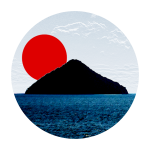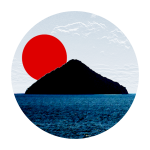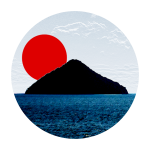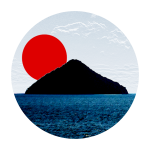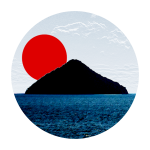Setouchi Triennale 2025 - The End
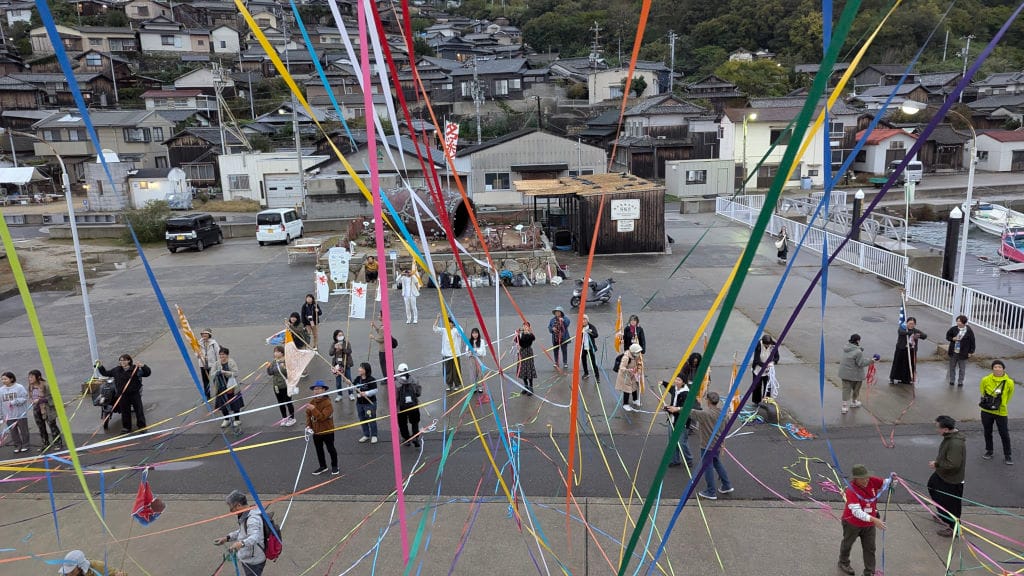
The Setouchi Triennale 2025 ended last Sunday. I would like to say that it was a unique Triennale, but they are all unique in their own way.
Here are some of my thoughts on this year's festival. A sort of debriefing if you want.
Overall impressions
A lot of the art this year was great — I'd even go so far as to say it was the best year in terms of artistic quality — but, at the same time, I'm not sure if there was one piece of art that really blew me away. I suppose that makes sense. When the overall standard is higher, fewer pieces stand out. Maybe.
Despite this, I didn't feel as much in a “festival mood” as I did in the past.
It's partly me. Having attended all the editions, I probably find the whole thing less exciting and more "business as usual" than before.
Partly, it was the festival itself. I felt that there were much fewer events, workshops, and so on this year. From what I’ve heard, it's probably a budget issue (the weak yen is messing up everything in Japan these days). It's a shame because events and workshops are what make the Triennale a "festival" to me and not just a giant art exhibit.
Partly, it was the visitors. I don't have the numbers yet, but the crowds just felt bigger than before. I tried to avoid them as much as possible, and I mostly succeeded (it involved a few sacrifices).
The result is that I felt less involved overall this year.
Well, I was literally less involved. Some years, I worked with the organization as a consultant. Some years, I did some guiding. Other years, I had a press pass that gave me free access to pretty much everything.
This year, none of that happened. I was just a "normal" visitor.
I was also quite busy during the spring session and away for most of the summer session (it was the first time I wasn't here during the Triennale). It's only this past month that it sort of felt like "the Triennale of past years" to me.
Strangely, I didn't run into any readers, which makes me a little sad. At every Triennale, I'd run into at least one reader, and that was always a fun moment. Sadly, it didn't happen this year. As there were more foreigners, I guess I was more "invisible."
Overall, I did fewer things and went to fewer sites than in previous years. For example, in 2019, my busiest Triennale year, I spent around 30 days on islands and at other art sites, not counting a dozen or so "pre-Triennale visits." This year, I believe I only spent about 16 days devoted to the Triennale. Money and energy were also factors. The weakness of the yen might make tourists happy, but it's killing us. As a reminder, Japan imports 60% of its food and even more of its energy. In other words, the cost of living has skyrocketed, while our salaries have stagnated for years. Not fun.
I also find myself with much less energy than in the past. Is this aging? I suppose so.
Okay, after this very long introduction, here are a few more thoughts about my experience with each site this year.
Naoshima
Number of visits in 2025: One so far, but zero during the Triennale.
This may come as a shock to some of you, but I tend to avoid Naoshima during the Triennale because it's just too crowded.
Some of you may interject, "But isn’t Naoshima the heart of the Triennale?"
No, it's not.
Too many people, Japanese and foreigners alike, make this mistake again and again.
Not only is Naoshima not the heart and soul of the Triennale, but worse, it's the island that is the least involved in the Triennale!
Yes, you read that right. There is no art exclusive to the Triennale on Naoshima. You'll find the same things you'll find the rest of the time, just with more people.
From what I've heard, the "over-tourism threshold" may have been crossed this year. If things remain this way, you won't see me on Naoshima during future Triennales either. I'd rather go during the off-season, if such a thing still exists. (It does; I'm being over-dramatic.)
I did go to Naoshima once this year, though. It was for the opening of the New Museum.
Benesse had the smart idea to open it between Triennale sessions, and having the privilege to be one of the first people in the world to visit, without huge crowds, and with most of the artists present, was an amazing experience.
If you haven’t yet, you can read all about it in the link below.
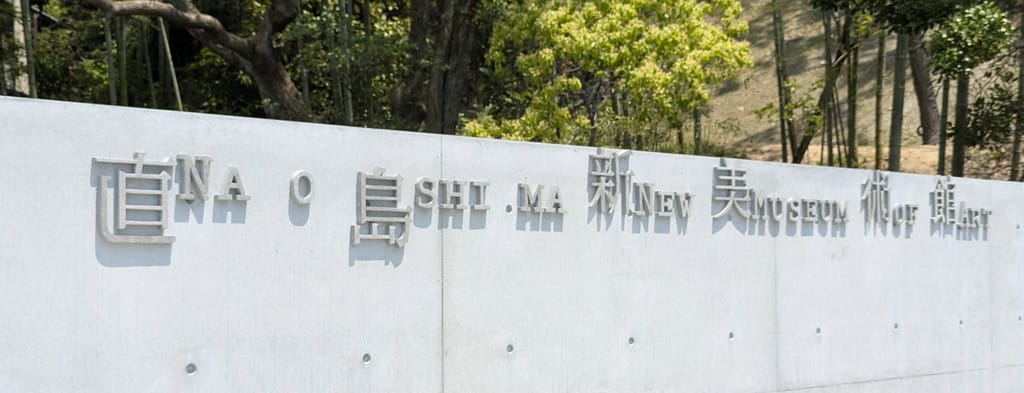
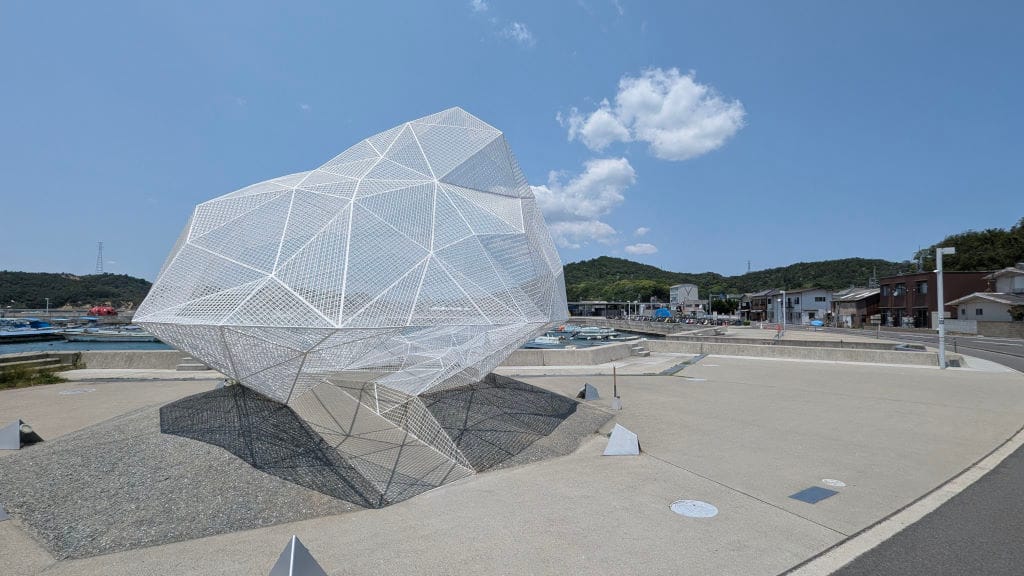
Teshima
Number of visits in 2025: Zero!
I can't believe I didn't make it to Teshima this year. Avoiding the crowds is one reason, but not the only one. I meant to go just before the summer session when Lin Shuenlong was putting the finishing touches on his newest installation, Beyond the Border – Prayer. But it was just too hot. Sadly, I didn't get to meet him again. Luckily, this installation
is supposed to be permanent, so I can't wait to see it and tell you all about it.
I also missed the other two new pieces installed this year. I barely heard about one of them. The other piece is Chiharu Shiota's Memory of Lines, and I hope it lasts longer than just one Triennale. I don't have any information about it yet.
Megijima
Number of visits in 2025: Two.
I'm not a huge fan of the island itself, but I really enjoyed the art there this year. It probably had some of my favorite new art, which was sadly most likely temporary.
You can read all about it below. I’ll show you more in the near future!

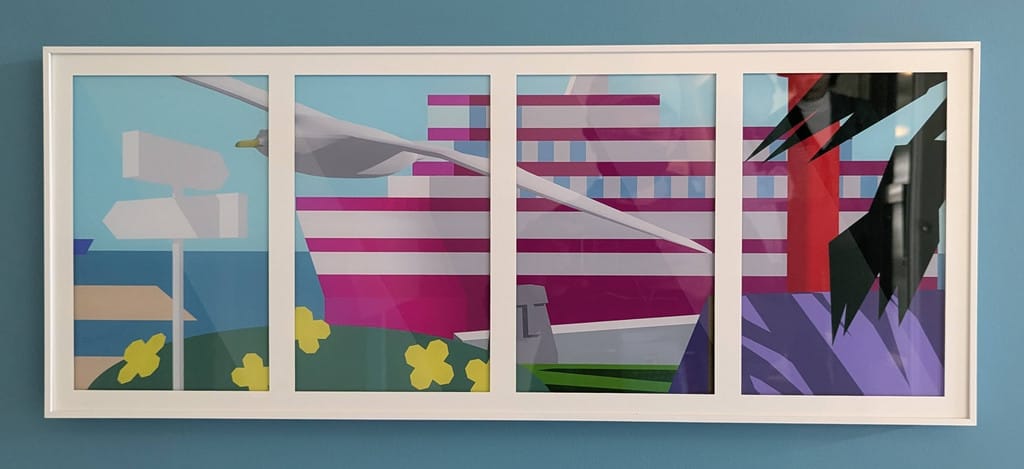

Ogijima
Four visits during the Triennale and a few more outside of the festival in 2025.
As you may know, Ogijima is my favorite island in the area, although I don't actually live there, contrary to what some readers believe. I don't exclude moving there one day, though.
For some reason, there wasn't much new art this year, but I never tire of the long-term and permanent installations.
Among the new pieces, "Dreamland" was wonderful, "Our Island" was poetic, and the "Future Museum of Ogi" was very fun.
The only piece that didn't speak to me much was "Day Dreaming / Dear Future Us." I probably would have liked it better in another location but it was in the former "Onba Factory," one of my favorite art projects, as well as my former favorite place on Ogijima and beyond.
In other words, "too soon." The Onba Factory is irreplaceable.

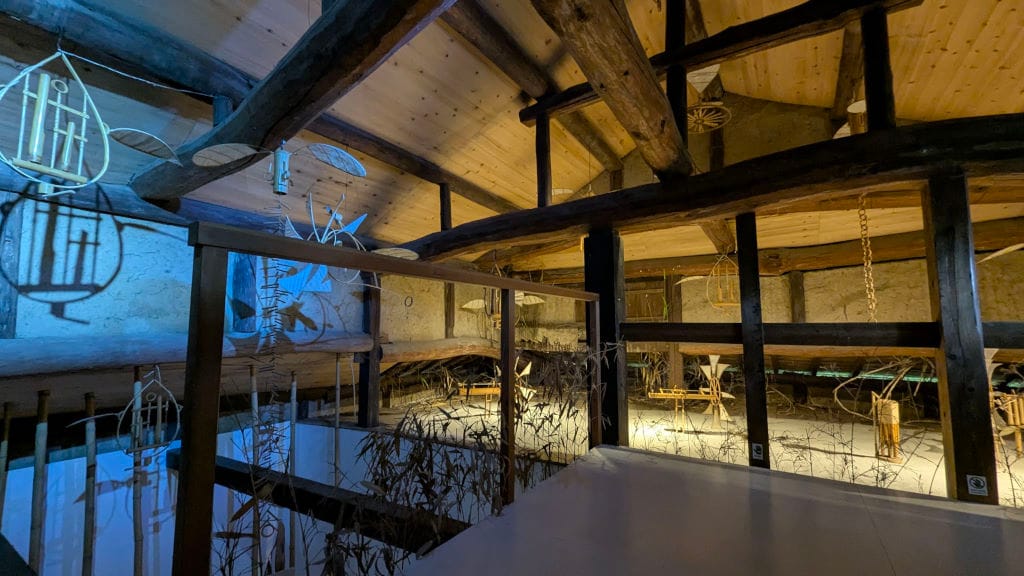
Shodoshima
Four visits during the Triennale.
I think this is the first year that I saw all of the new art on Shodoshima. That's quite an achievement, although there might have been fewer new pieces than in previous years.
Shodoshima is a great island overall, and even more so during the Triennale.
Thanks to its size, it almost never feels crowded, and the "inconvenience" of visiting without a car means that people coming for the "wrong reasons" don't bother going.
I heard some people complain about the inconvenience of holding the festival in places that rely on ferries with limited daily runs, limited public transportation, and limited accommodations.
Well, what can I say besides: "It's not a bug, it's a feature."
Here are links to two past articles (one by me, and one by one of the few Anglophone journalists who "gets" the place) to help you understand what I mean.
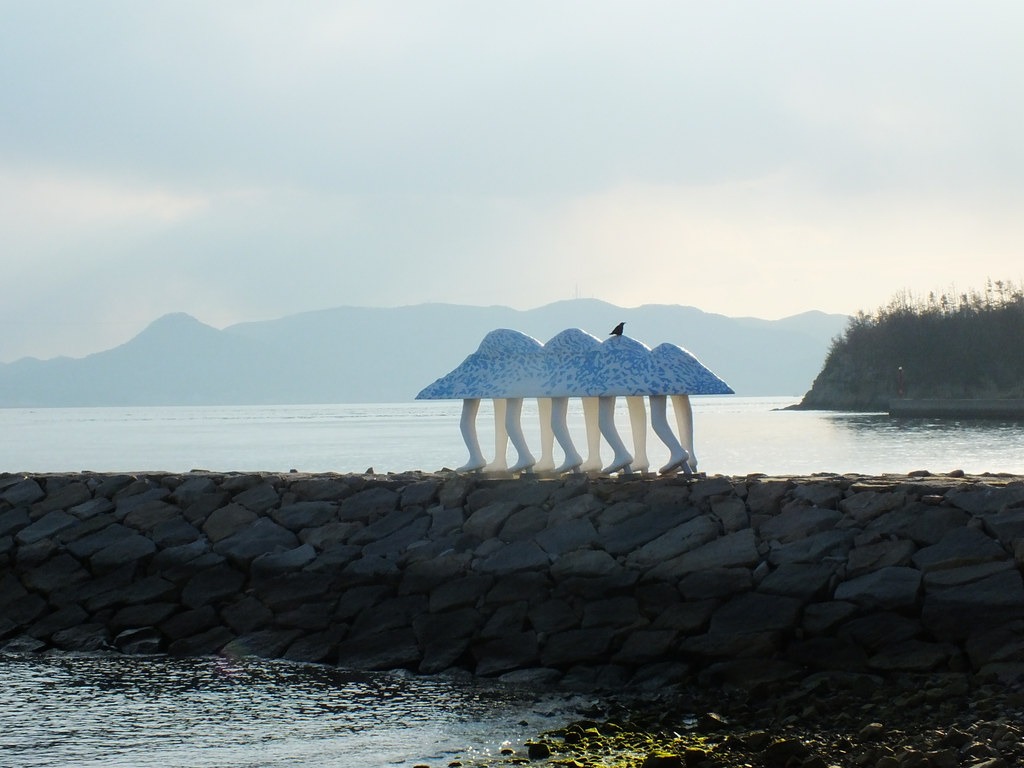
Why is the most exciting art in Japan so hard to get to?
Some of my favorite new art this year could be found in the "Setouchi Asia Gallery," as well as in the Nakayama and Hirayama valleys. I know I haven't talked about the latter yet.
Here are my posts about Shodoshima in case you missed them. There are more to come soon.

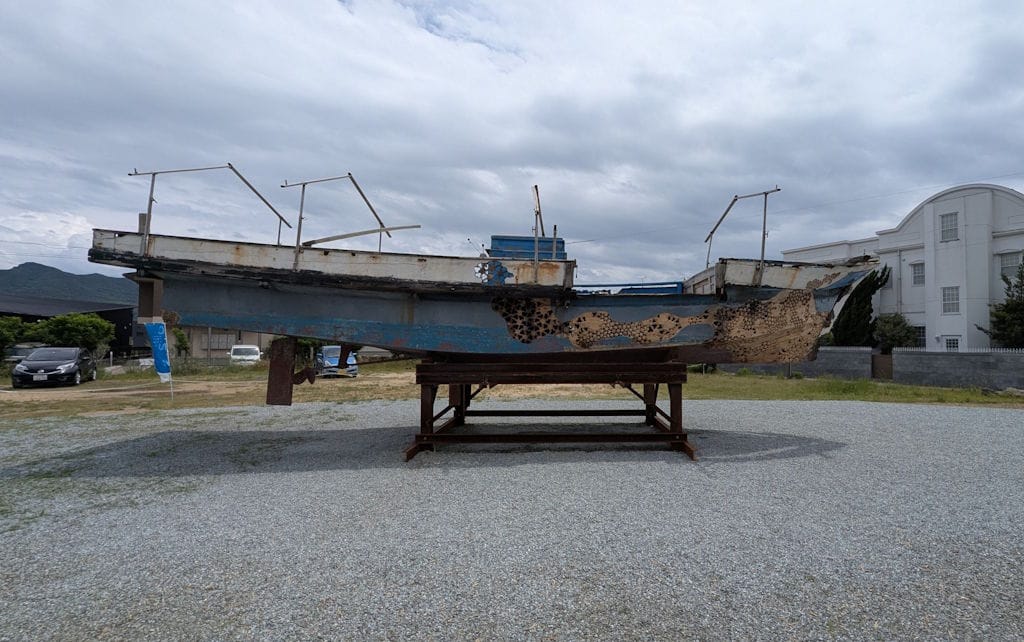
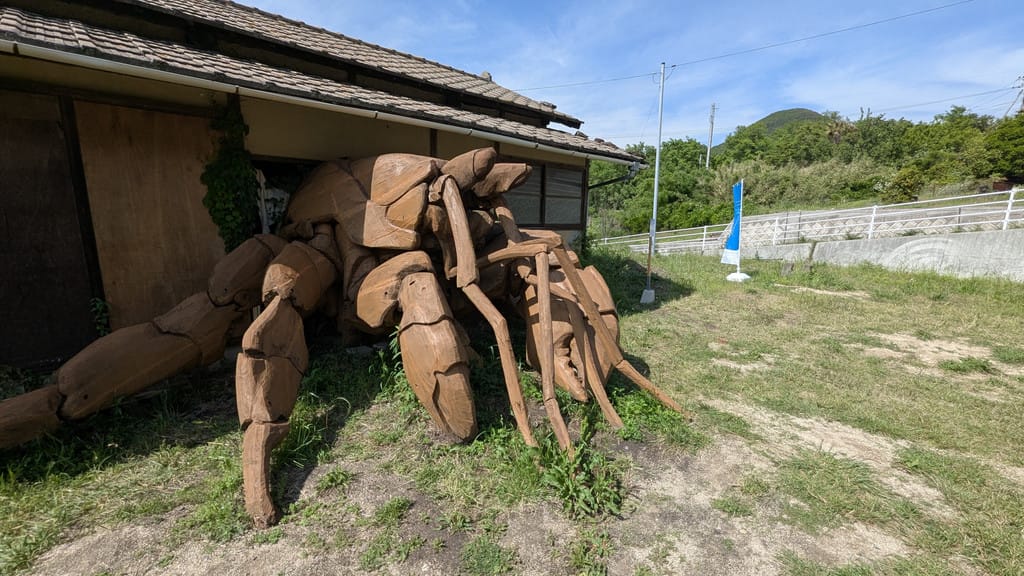
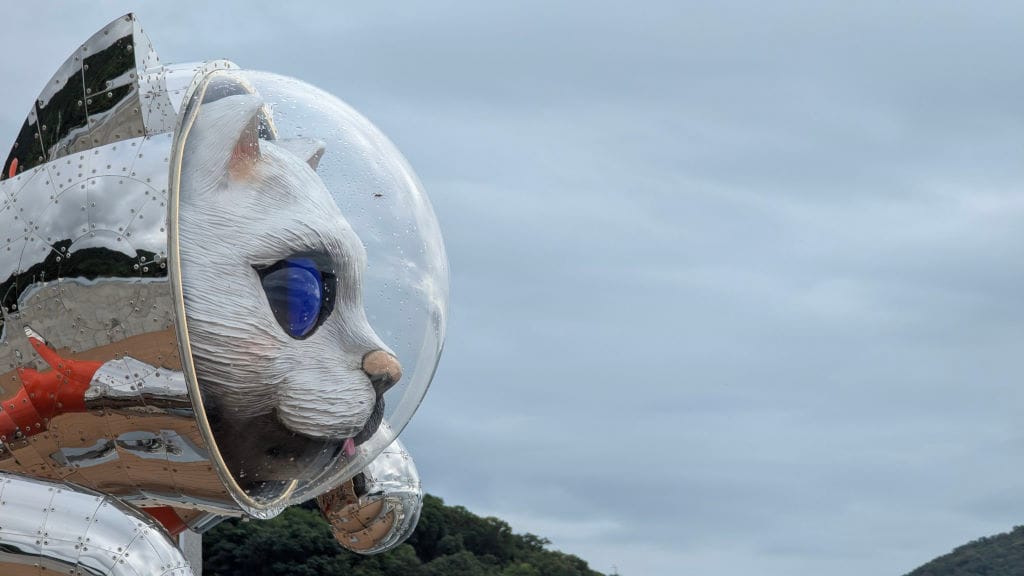
Oshima and Inujima
I didn't make it to either island this year. I can blame time, the weather, and the need to save money (the trip to Inujima is not cheap).
I really should have gone to Oshima, though, and I’m not sure why I didn’t.
Inujima didn't have enough new art to justify a trip there.
Takamatsu
Number of visits in 2025: I live here. 😊
While it's obviously the easiest destination, sadly, I didn't find much art that was interesting this year.
- The art in Yashima was enjoyable, but not exceptional.
- The Vietnam Project shouldn't have been held in the summer heat. I felt really bad for the Vietnamese craftspeople who were stuck there in the heat with little shade.
- The art in the port: Sora Ami is loved by many, myself included, but it should be on a beach, not in an urban environment. The refugee exhibit was important from an educational perspective, but I'm not sure if it was in the right place or if the festival was the right context for it.
- I saw some of the exhibits in the city’s museums. I missed some.
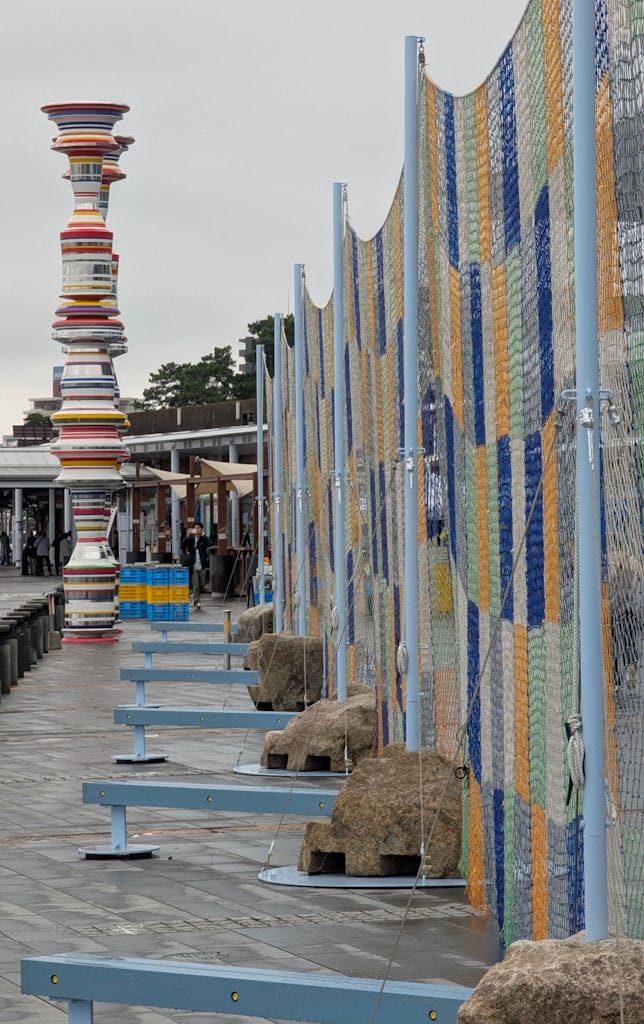
Uno Port
No visit in 2025.
I was actually interested in the new art in Uno for once, but without a direct ferry, it's one of those places we intended to visit but ultimately didn't.
You see, the "inconvenient" aspect of the festival affects not only tourists coming from 10,000 km away but also locals. It's just part of life here, partly because of the geography—I mean, we're talking about islands and the two coasts of a sea. Sure, it's a very narrow sea, but it's still a sea—and partly because of how Japan's depopulation affects rural and "less urban" areas. There used to be direct ferries. They’re gone because not enough people rode them anymore. If you think the Triennale doesn't have enough ferries, be aware that it helps most of the remaining ones survive financially. Without the Triennale, even fewer ferries would go to and from the islands.
Seijima
Two visits in 2025.
I'm glad the spotlight was on Seijima this year, but I’m sad it came at the expense of Shamijima. You can read my report on the first visit here:
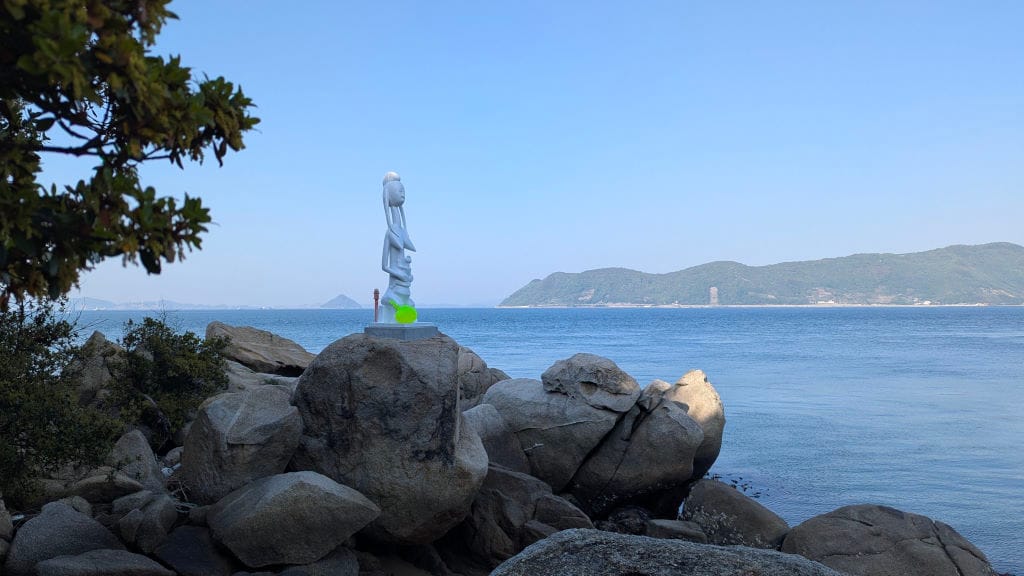
I may or may not discuss my second visit. It featured my favorite piece on the island. See the picture below.
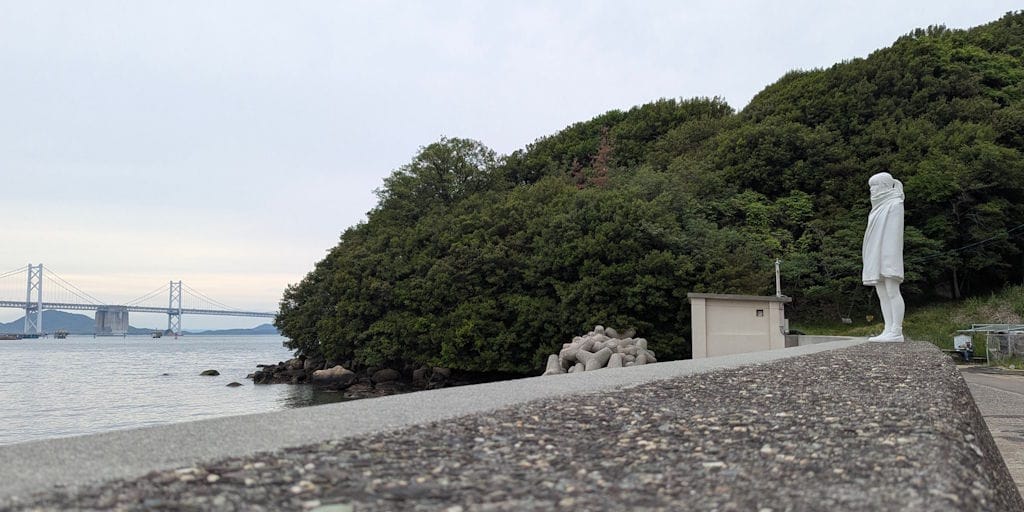
Shido, Hiketa, Tsuda
Sadly I didn't go to any of the summer locations as I was in France for most of the summer session.
Luckily, Leonid Tishkov's new installation on Hiketa is permanent and open most weekends, so I'll go see it as soon as possible and I’ll tell you about it shortly after.
Utazu
Two visits in 2025. (for the art, I'm not counting visits to shopping centers or the aquarium.)
This was a revelation!
After living in Kagawa for 14 years, I thought I knew the prefecture inside and out. But it turns out that I didn't know Utazu at all.
I talked to a few people around me, and I have a feeling that not many people know about it. Even some people from Marugame, literally Utazu's "next-door" neighbor, were surprised by what they found.
Let me explain.
Utazu is the smallest municipality in Kagawa—or is it Kotohira?—and most of us only experience the town when driving along "Hama Kaido" (the coastal road) passing through a long stretch of stores. For many of us, Utazu is just the shopping center town of western Kagawa.
However, it turns out that Utazu is much more than that. If you go just a few blocks inland, you'll find yourself in a cute, calm little town. I'll tell you more about it later, but it was a true discovery. There were only a few artworks, but they were well worth the detour. Since they weren't on an island, they were open until 8 p.m. Visiting art in old houses and temples at night was an amazing new way to experience the Setouchi Triennale.
More details soon.
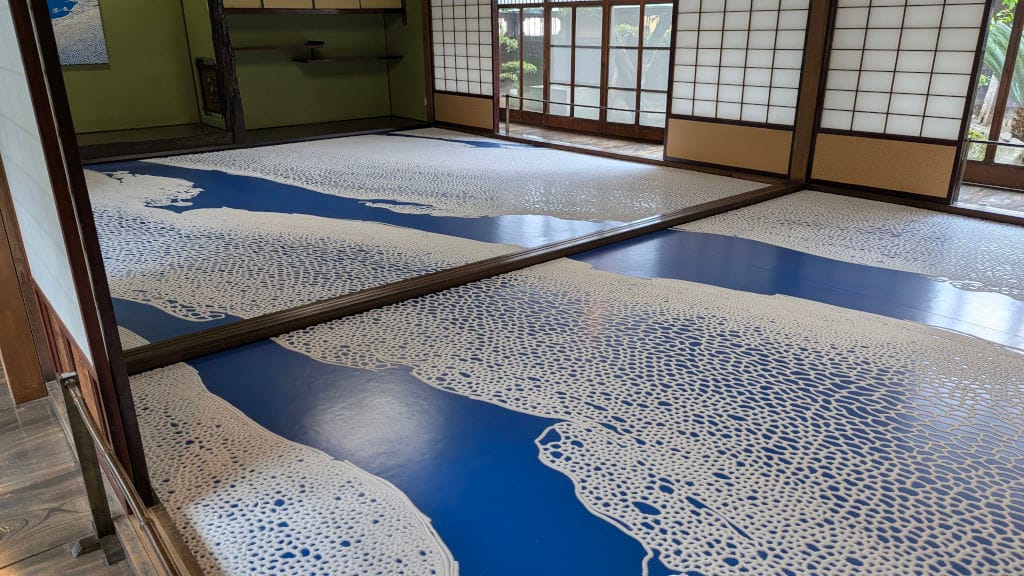
Honjima
One visit in 2025.
As I mentioned before, Honjima is a wonderful island to visit, art or no art. There weren't many new installations this year, but Ekaterina Muromtseva's was great, and it's always a pleasure to revisit the old "classics."
The cherry on top is that this is where I saw the Seppuku Pistols this year. Their performances are always some of the best moments of the Triennale, and they were quite rare this year—just a few days during the final week.
More details later.
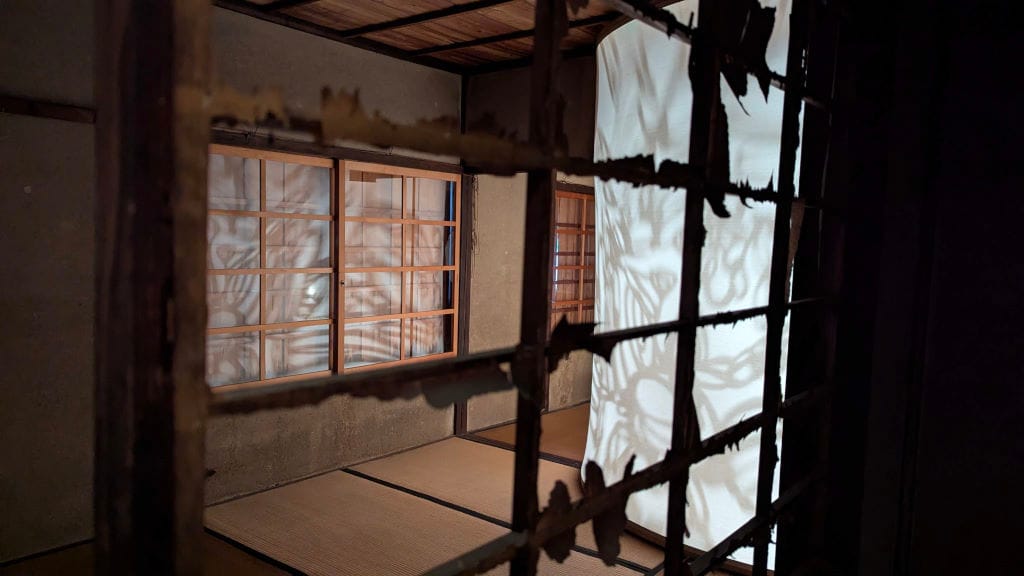

Takamijima
One visit in 2025.
I've written before about my visit to Takamijima this year (see below), and my feelings remain the same: it's an eerie and somewhat depressing island because it's pretty much dead, but it's an amazing venue for interesting art.

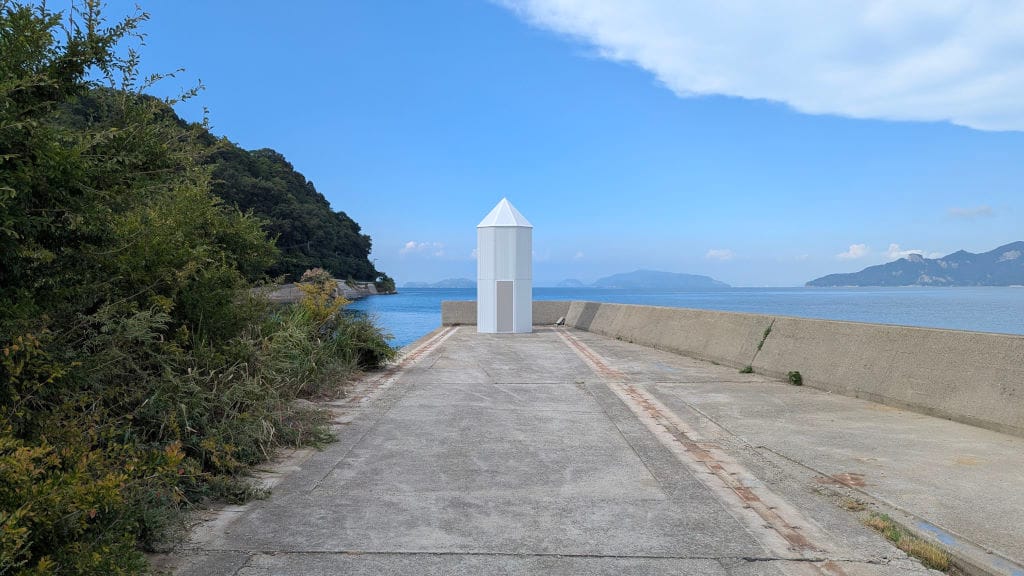
Awashima
Oh no! What happened?! I couldn't make it to Awashima this year! That's a sad first for me.
Oh well, I guess I'll have to go soon, then. Awashima has a long history of hosting art, which predates the Triennale. Some of its best pieces, which were once part of the festival, are now run independently and available outside of the Triennale.

Ibukijima
One visit in 2025.
I'll tell you more about Ibuki soon. Most of the art was new this year. It was interesting, though not mind-blowing.
In any case, Ibukijima is always worth a visit, if only to see the Tree of Ibuki, one of the area's masterpieces.
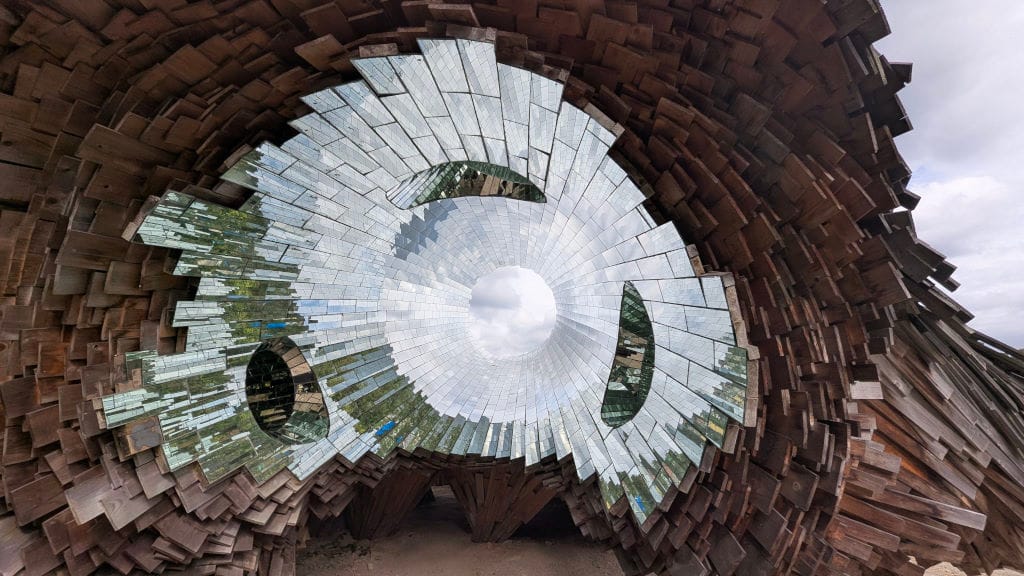
It looks much better on sunny days. Since the beginning of this newsletter, I've been promising you a post dedicated to it. It'll come in due time.
What's next?
For the Setouchi Islands and their art.
Most of the islands and their residents are now going to take a well-deserved break. The temporary art will be dismantled over the next few days. The long-term and permanent pieces will also close for now. Before the pandemic, most of the permanent art was open most weekends from March to November, but that stopped in 2020. This was partly due to the virus itself and partly due to the small number of available volunteers. The lack of activity due to the virus meant that many volunteers moved on to other things, leaving no new blood to replace them.
Now that they have recruited enough new members, it's unclear if the art will reopen more often or remain open just a few days a year as it has been for the past few years.
Of course, the art on Naoshima, Teshima, and Inujima keeps on following its own schedule and can be seen year-round.
For the newsletter.
I still have a few places and quite a few artworks to show you. I'm sure you'll enjoy seeing them, especially if you missed them, and hearing my perspective on them.
After that, we'll see, but I have a few ideas. I maintained Setouchi Explorer for 15 years, even without the Triennale. There's no reason I can't do the same with this newsletter (and I haven't forgotten the original blog either).
I've announced it a few times, it's taking longer than planned for reasons beyond my control (I need help from my admin, who is busy with more important matters), but I will merge this newsletter with my other blogs eventually, and I hope you'll be interested in the content unrelated to the Setouchi art islands too. Expect content about France, my grandfather's early 20th-century correspondence, culture in general, thoughts on the state and evolution of the internet and social media, animals, and a few other things. You'll be able to subscribe to the topics that interest you.
I guess that's all for now.
As always, thanks for reading and subscribing. If you liked what you read, please share it. If you've read this far and aren't a subscriber yet, maybe it's something you'd like to become.
Thanks!



